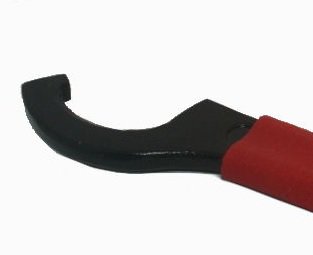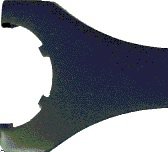ER (Extended Range) collets are steel spring collets with two tapers and a "self release" feature. The shallower taper on the back (8 degrees) fits into a holder of some sort. The taper in front mates with a special nut. Between the two tapers there is a groove that engages with a lip on the nut. This is what provides the "self release" feature; when the nut is loosened, this lip pulls the collet body out of the holder by the groove.
ER collets are nice because the have (as the name might suggest) an extended clamping range when compared to other collets (R8, MT, 5C). ER collets (except for the really tiny ones) have a grip range of 1mm (0.039 inches). Most other collets won't get you more than half that, so you need a lot more to cover the same range. The main reason for the increase range is that the collets are slit from both the front and back, and there tend to be more slits than other types (the R8 collets I have are slit in 3 places, with ER collets, it's usually around 12). Another advantage of ER collets is that the material or tool can pass all the way through assuming the collet holder has clearance.
One thing to keep in mind with ER collets is that there are a number of different ranges. Typically this is denoted by something like ER-20 or ER-32. The smaller the number, the smaller the collet, and the smaller the size of the work or tooling the collet range will accept. The number (from what I can tell) is the largest diameter in millimeters.
To use ER collets, you will need collets (of course...) and something to put them in. Some small machines like CNC gantry routers have spindle tapers that accept small ER collets. Most larger machines have some other taper like R-8, MT2, or some form of CAT/BT taper. For these, you need a collet holder, which is usually just a chunk of steel with your machine taper on one end and an ER collet taper on the other. I have both ER-20 and ER-32 collets, though I don't currently have a holder for the ER-32s. The ER-20s are used in conjunction with TTS collet holders, which I like quite a bit.
I don't know much about CAT40 holders or the like, as I don't have any machines that use those, so hopefully somebody else will throw in their 2c on the subject.



